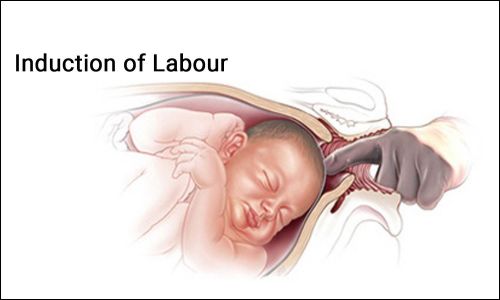A Complete Guide to What You Should Know About Labor InductionA Story by Brenda Hunterwe'll go over every important detail you need to know about labour induction so you can decide if it's the best course of action for you.A medical practise called labour induction is done to speed up labour and delivery. You can make an informed choice about your birthing plan by being aware of what to anticipate and the advantages and disadvantages of labour induction. In this thorough guide, we'll go over every important detail you need to know about labour induction so you can decide if it's the best course of action for you. Labor Induction: What Is It? The procedure or therapy that induces childbirth is known as labour induction. Typically, it is carried out when a medical justification exists. Labor induction may be advised, for instance, if the mother's health is in jeopardy or the baby is not developing properly. Sometimes women ask for labour inductions because they are in excruciating pain or don't want to have a protracted pregnancy.  Medication is the most popular way to start labour. The most frequently prescribed drug is known as Pitocin. It is a man-made version of the hormone oxytocin, which is produced naturally in the body and aids in labour contractions. Pitocin can be injected intramuscularly or intravenously (via an IV) (into the muscle). Once in the bloodstream, it starts working fast to aid in triggering contractions. Cytotec is yet another drug occasionally utilised for labour induction (misoprostol). Cytotec induces uterine contractions whether taken orally or implanted vaginally. Additional Techniques for Starting Labour Include: >>Stripping or Sweeping the Membranes: With a gloved finger, a doctor or midwife separates the amniotic sac from the uterine wall. Prostaglandins are released as a result, and they may aid in contraction onset. >>Balloon Catheter: This device inserts a tiny balloon into the amniotic sac through the cervix. Reasons for Labor Induction Your healthcare professional may advise or induce labour for a variety of reasons. They may consist of: >>You have a medical problem, such as preeclampsia, diabetes, or high blood pressure, that makes prolonging the pregnancy risky.  >>You are past your due date. >>The placenta has started to degenerate and is not supplying the baby with enough nutrition and oxygen because of this. >>You are carrying multiples. >>Your water has burst, but labour has not begun naturally within 24 hours because you previously went into preterm labour. Getting Ready for Labor Induction There are a few things you can do to get ready if you and your doctor determine that labour induction is the best option for you and your baby. First, in the days preceding your induction, make an effort to obtain as much sleep as you can. You'll require as much energy as you can muster! For proper hydration and nutrition, consume a lot of fluids and wholesome foods. Take a walk every day if you can. This will encourage blood flow and strengthen your muscles, preparing your body for labour. Finally, make an effort to unwind and maintain your optimism. Labor will be simpler if you are more at ease. Benefits of Labor Induction Notwithstanding the dangers, labour induction has a lot of advantages. These advantages consist of: Since prolonged pregnancies are more likely to result in infection, inductions can lower the risk of infection for both mother and baby. They can also reduce the need for unnecessary C-sections. If an induction is performed for medical reasons, it can frequently help avoid an unnecessary C-section. Finally, they can lessen the amount of stress placed on the baby because of labour induction. Overall, inducing labour can be a secure and efficient approach to start or hasten labour. This surgery has certain risks, but it also has a lot of advantages, so it's worth thinking about. Your healthcare practitioner can assist you in weighing the potential risks and advantages to help you decide if labour induction is the best option for you. Always get in touch with Midwife in Paradise CA. Guidelines for a Painless Labor Induction Procedure You can take a few steps to ensure a flawless labour induction procedure: >>First, make every effort to unwind. Your body is more prone to oppose the induction process if you are tight and nervous. >>Second, in the days preceding your induction, drink a lot of fluids, preferably water. This may lower the chance of problems and keep your body hydrated. >>Have a light diet in the days leading up to your induction, third. As labour begins, you don't want to have a full stomach because this can cause nausea and vomiting. >>Fourth, make an effort to obtain some rest the days before your induction. This will enable you to get the best possible sleep before giving birth. >>Lastly, put your faith in your medical professionals and do what they say. They are skilled professionals who genuinely care about you and your unborn child. Contrasts with Labor Induction Labor induction alternatives abound, and each has advantages and disadvantages of its own. Below is a list of some of the most well-liked alternatives: 1. Using medicine to promote contractions: This entails taking medication that causes your uterus to contract. Pitocin, a synthetic version of the hormone oxytocin, is the most frequently prescribed drug for this. Pitocin is normally only used if all other attempts to induce labour have failed or if the baby's health is at risk.  2. Breaking your water: With this technique, your doctor will puncture the amniotic sac to encourage contractions. It is often only carried out if you are already in labour and have a dilated cervix (open). 3. Acupuncture: Acupuncture is a traditional Chinese medicine technique that entails putting tiny needles into certain body sites. Although some studies have suggested that acupuncture may be useful in inducing labour, further investigations are required before it can be advised as a regular course of treatment. 4. Herbal Remedies: Although several medicines have been used historically to hasten labour, there is scant scientific evidence to back up this practise. Conclusion Before making any decisions, it's crucial to have a thorough understanding of the labour induction process because it contains numerous variables and elements. We sincerely hope that this in-depth explanation has been helpful in assisting you in understanding labour induction in general as well as what may be involved in your particular situation. If you have any questions or concerns about labour induction, including any potential hazards or advantages, don't forget to talk to your doctor or midwife in your own area Butte County Midwife.
© 2023 Brenda Hunter |
Stats
44 Views
Added on February 21, 2023 Last Updated on February 21, 2023 Tags: Paradise CA Midwife, Paradise CA Midwives, Oroville CA Midwife, Oroville CA Midwifery AuthorBrenda HunterLos Angeles, CAAboutMeet Brenda Hunter, a 35-year-old powerhouse driving innovation at ULTIMATE WP SMS as a stellar writer. Based in the vibrant hub of Los Angeles, California, Brenda's journey began at California Univer.. more..Writing
|

 Flag Writing
Flag Writing